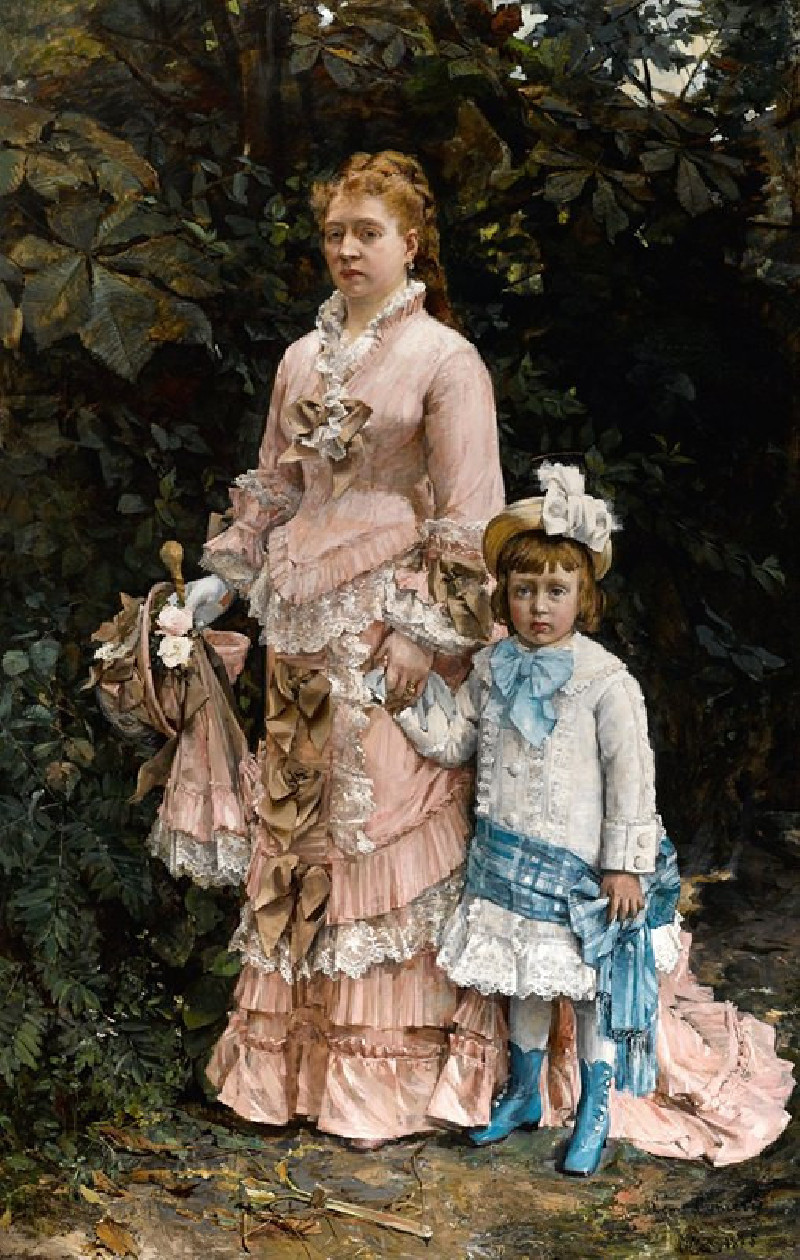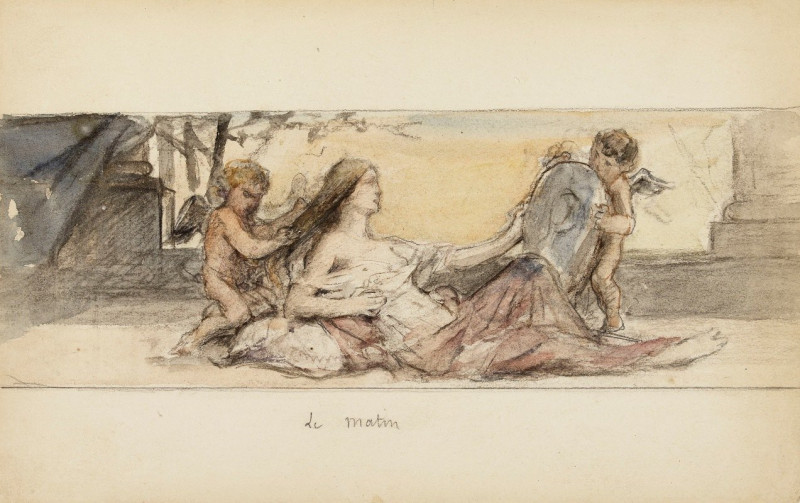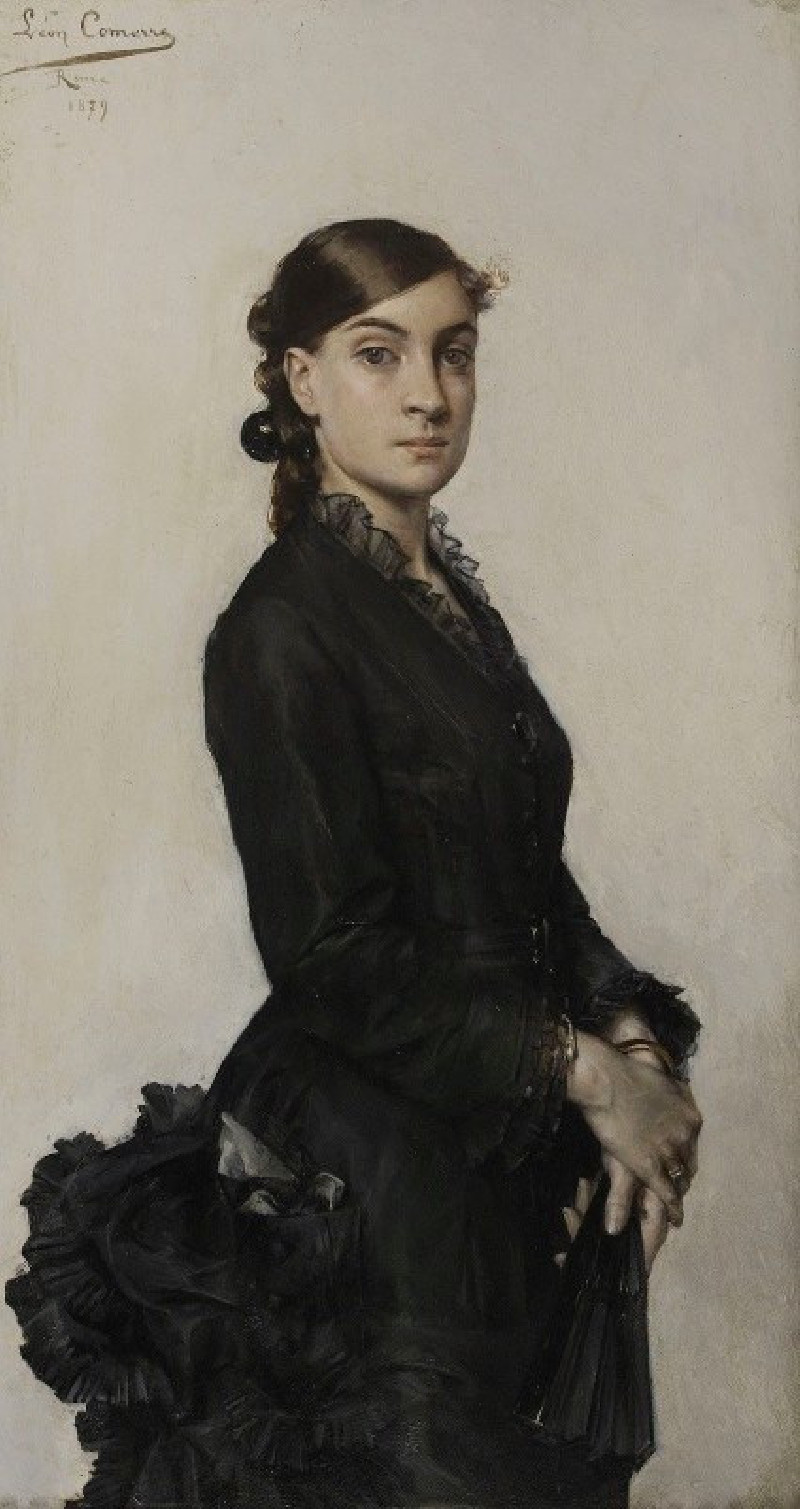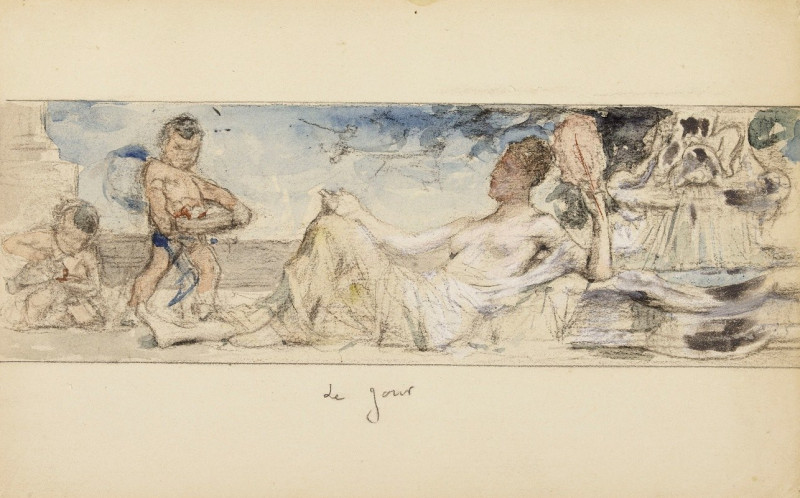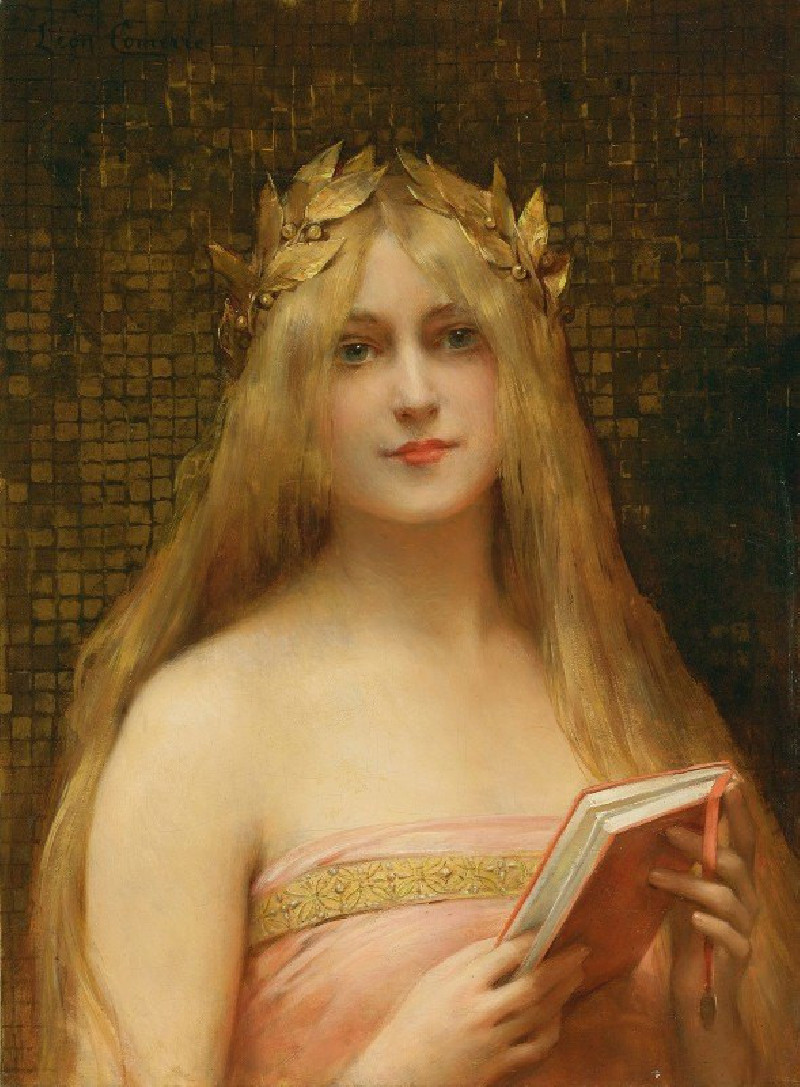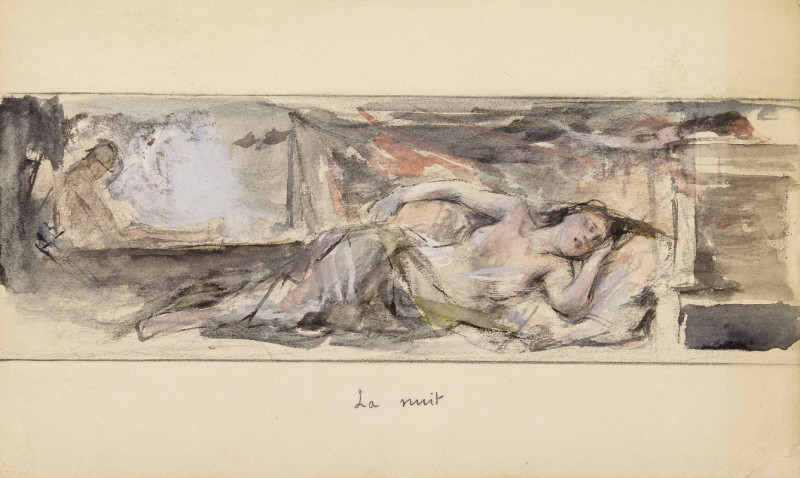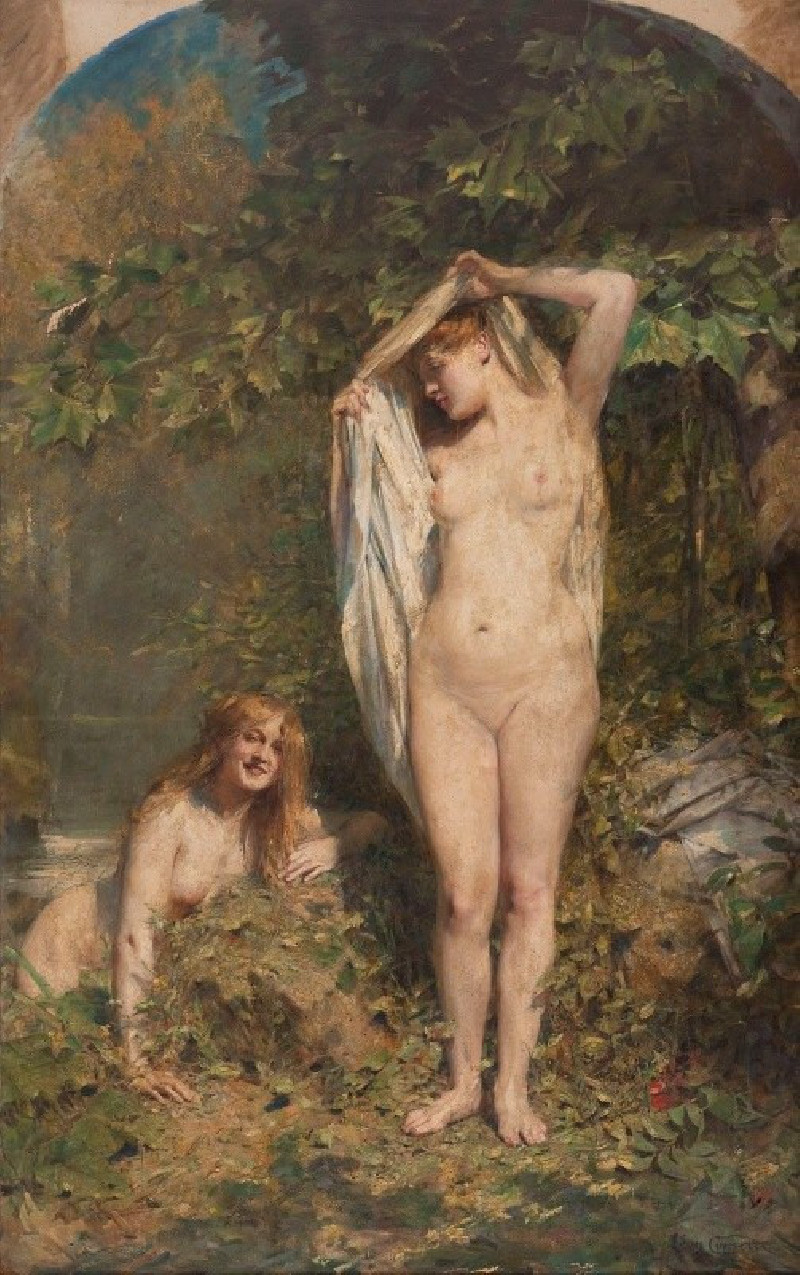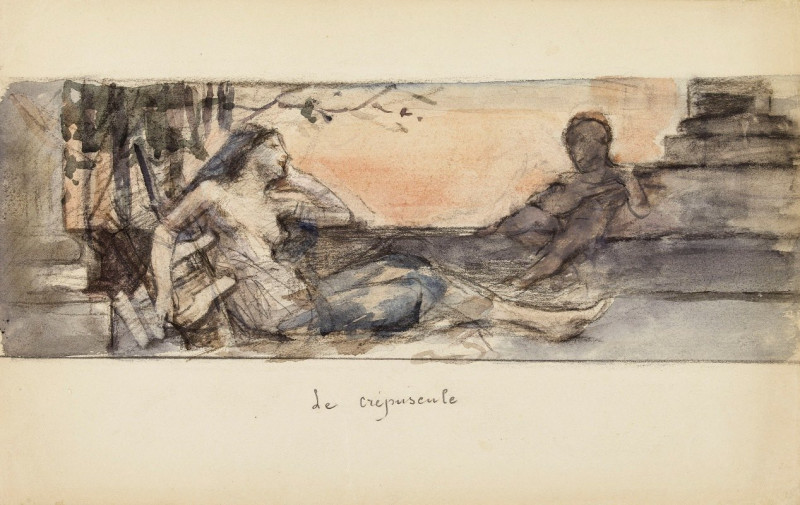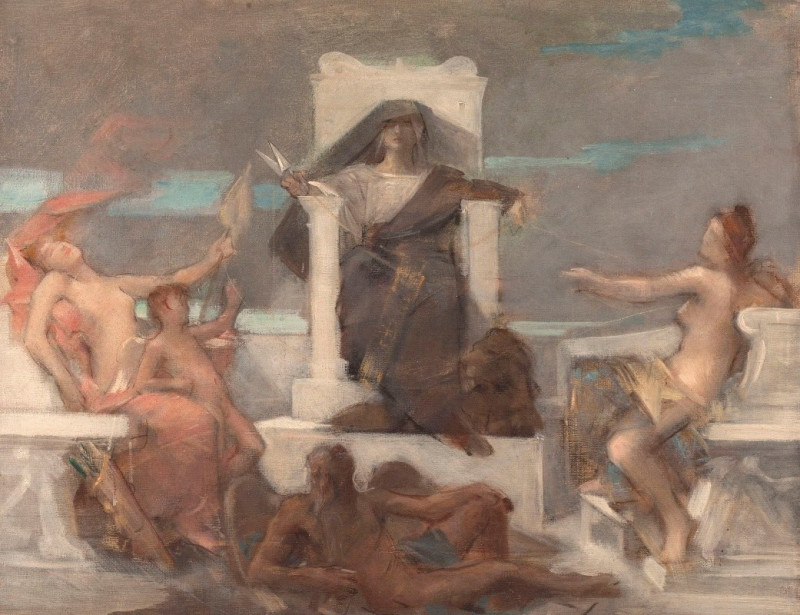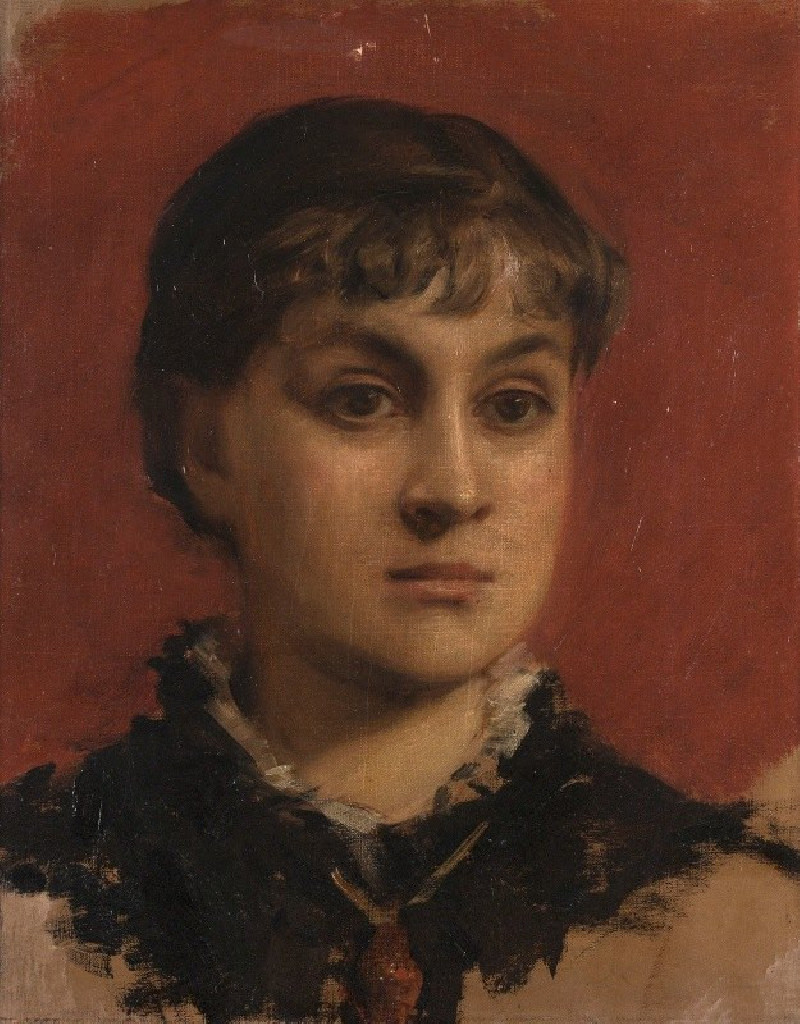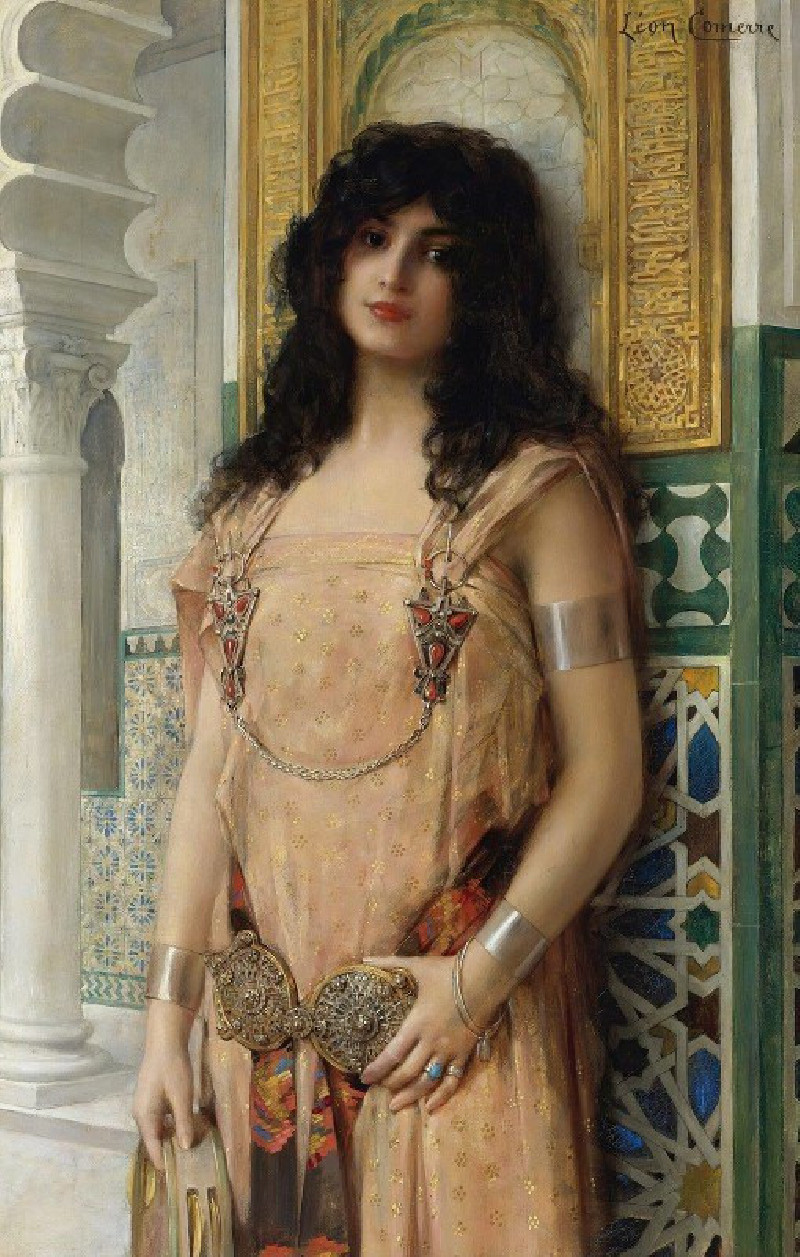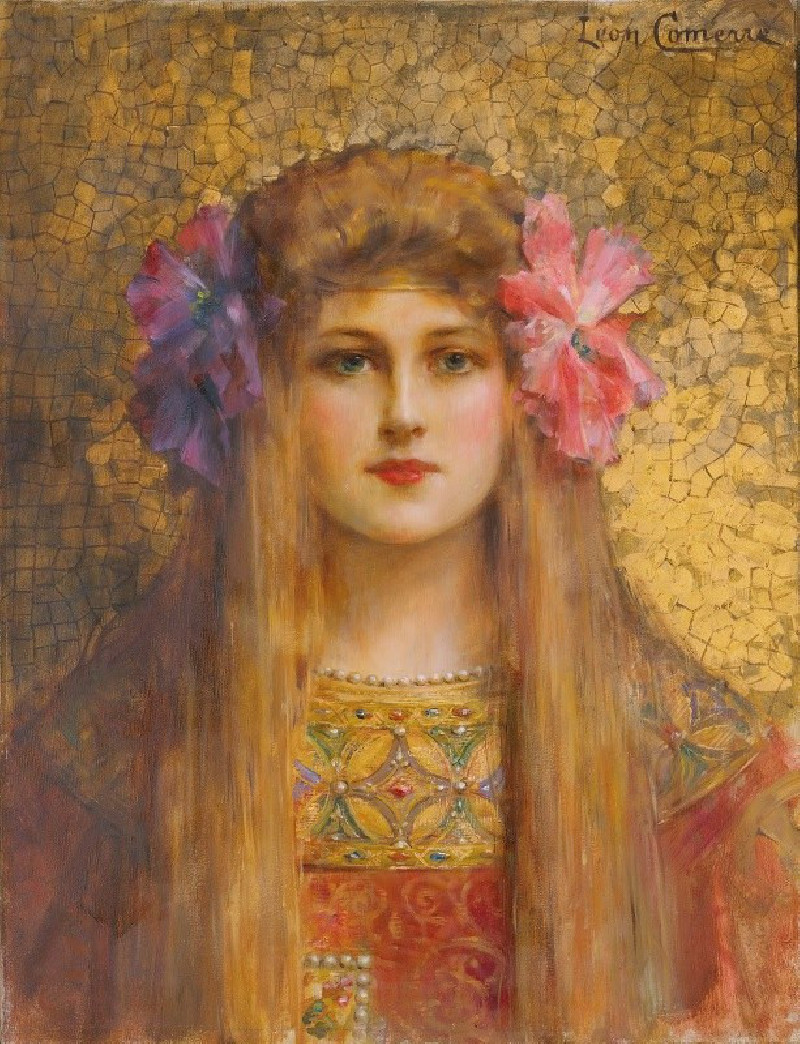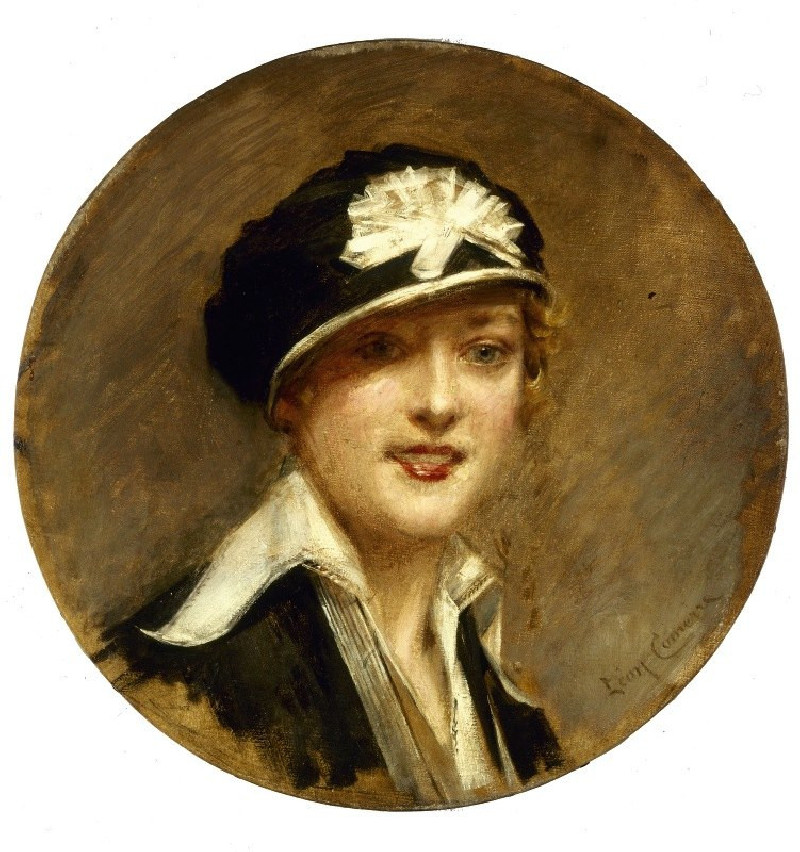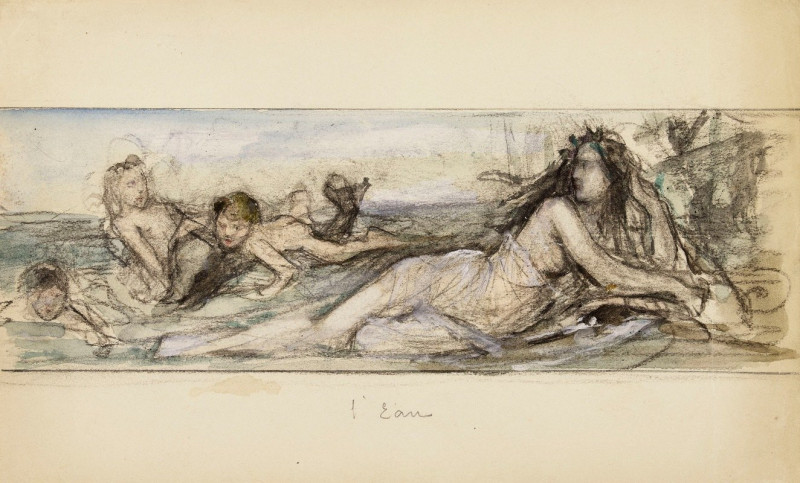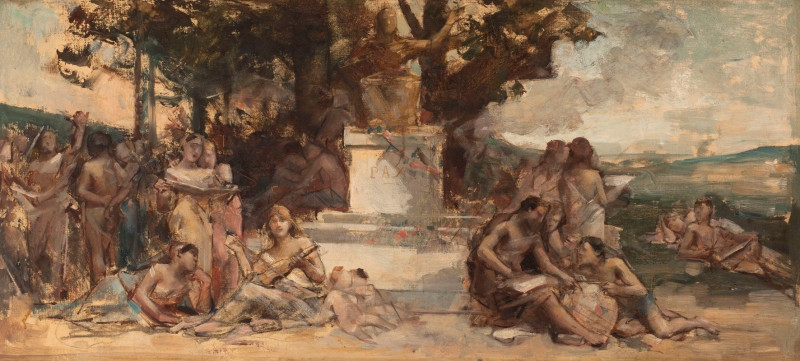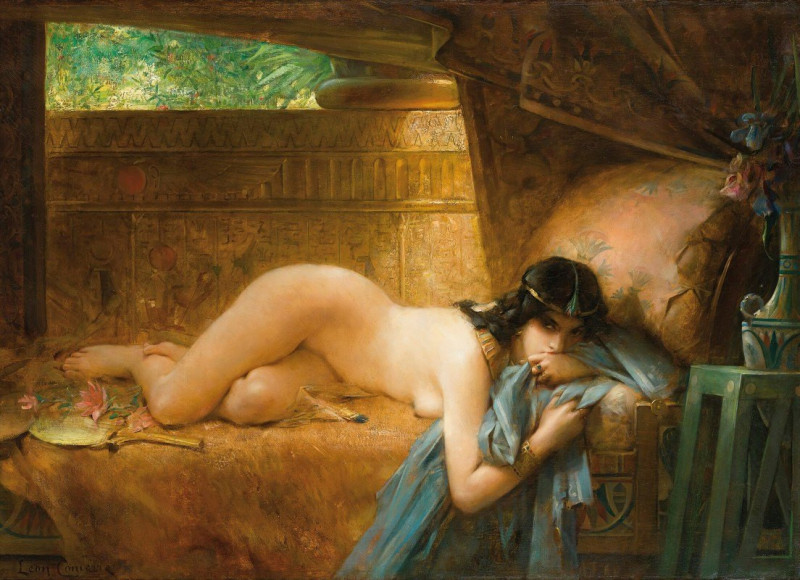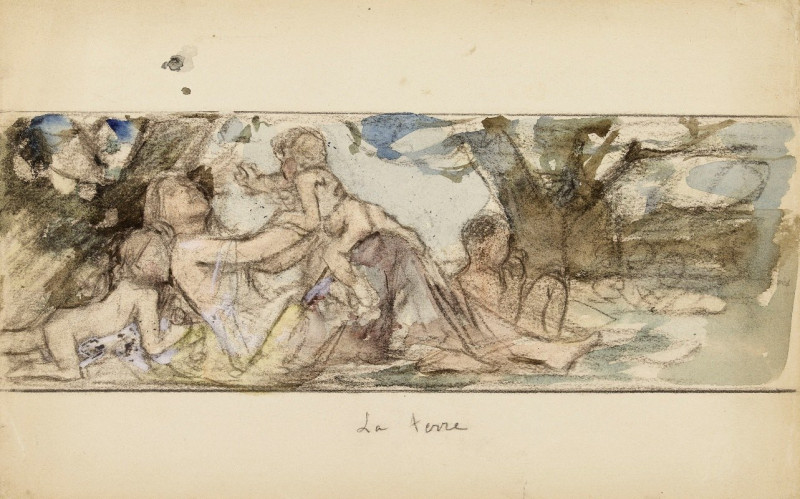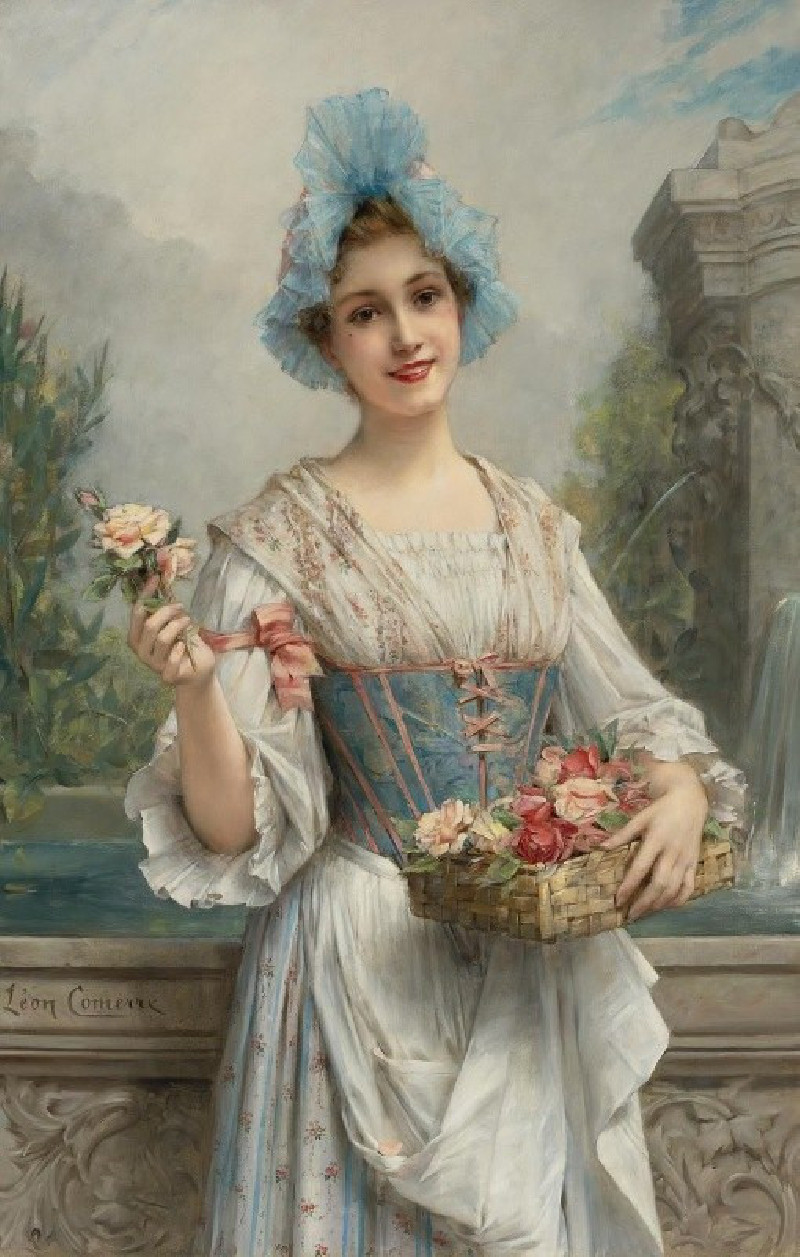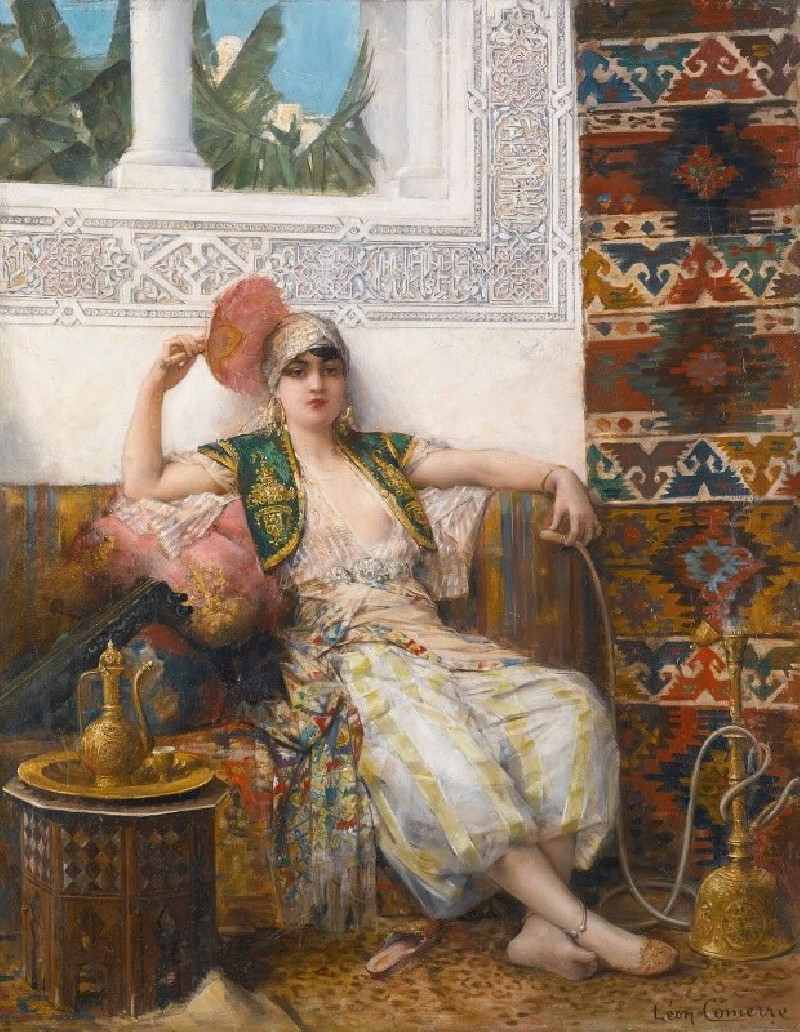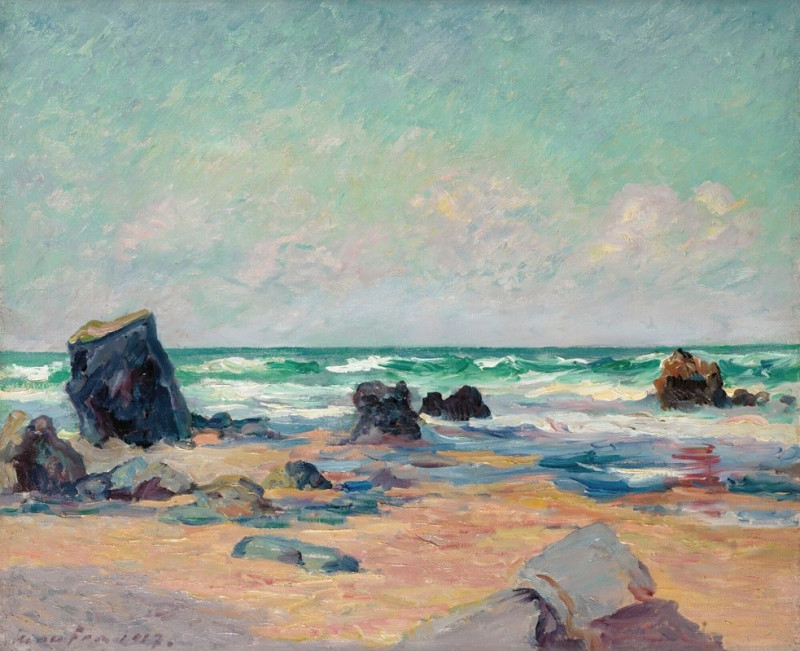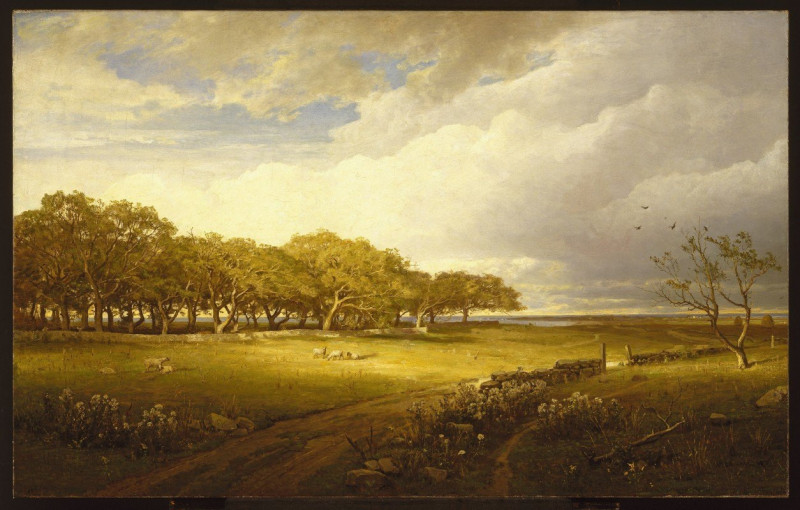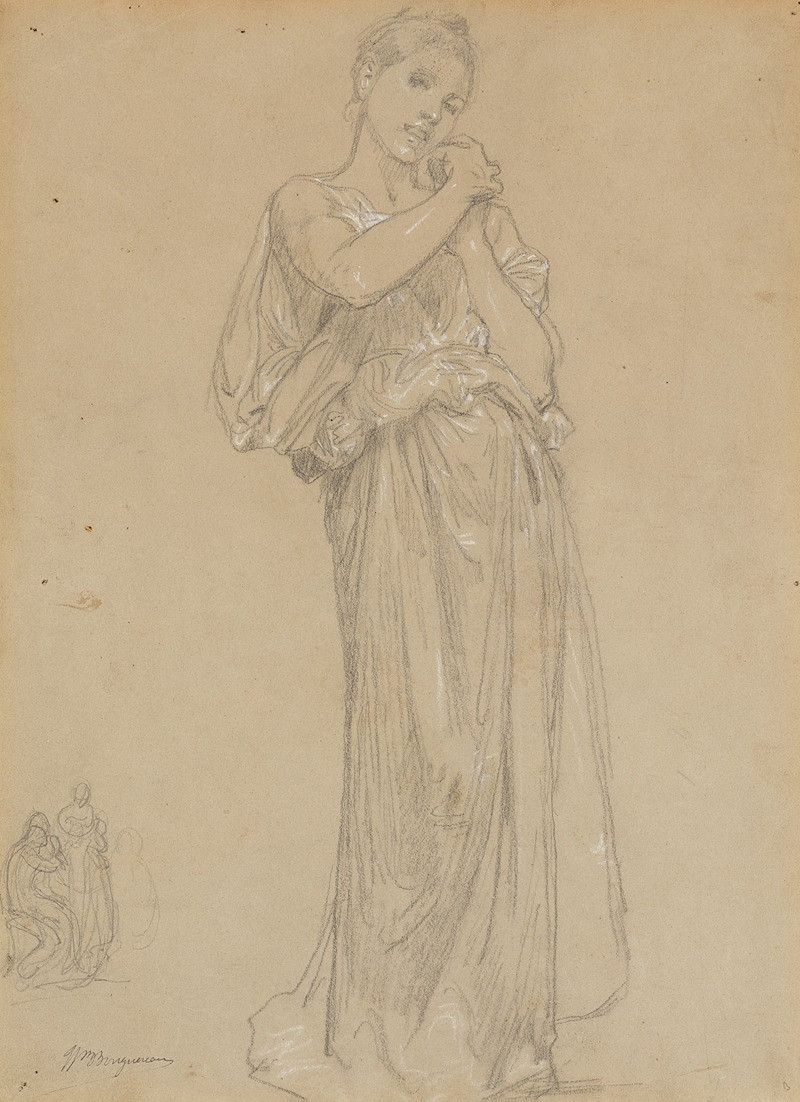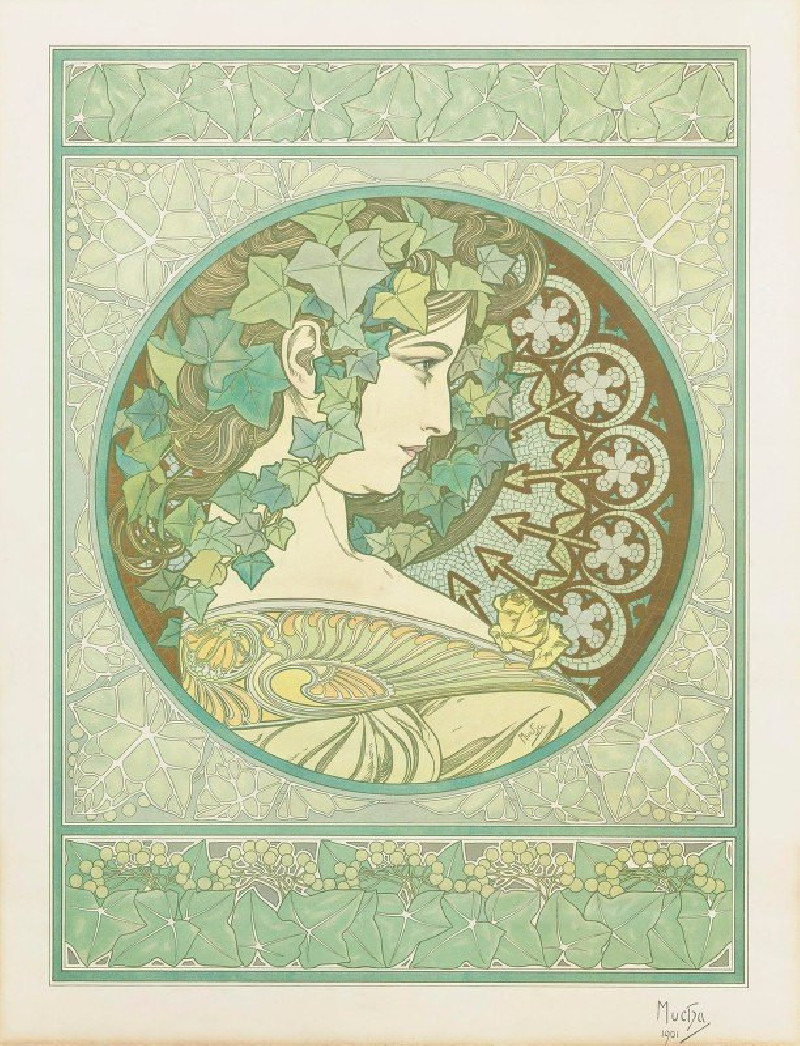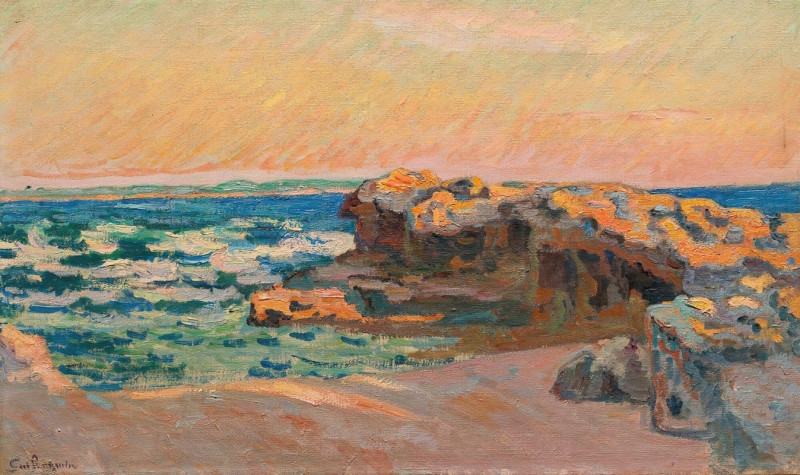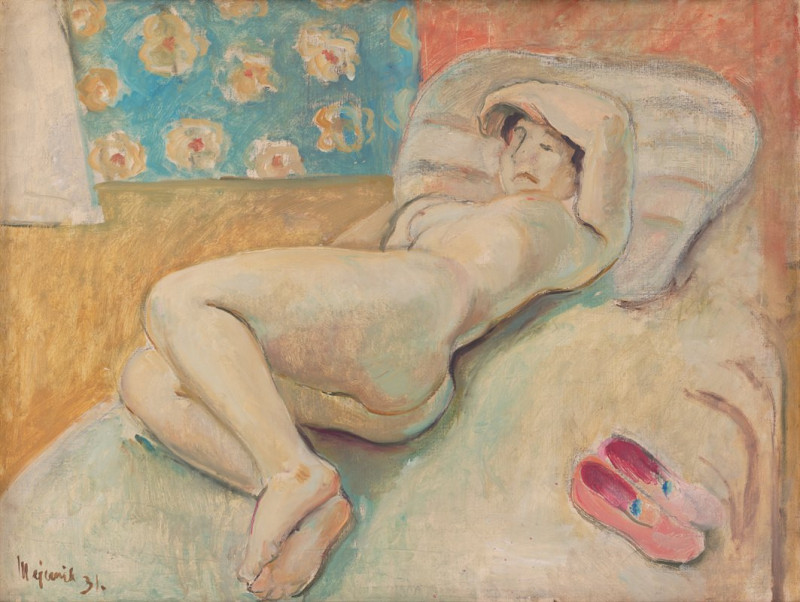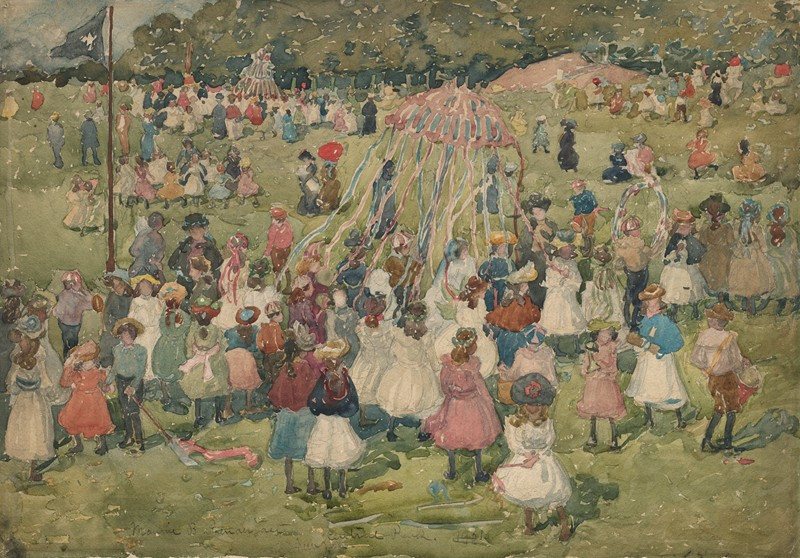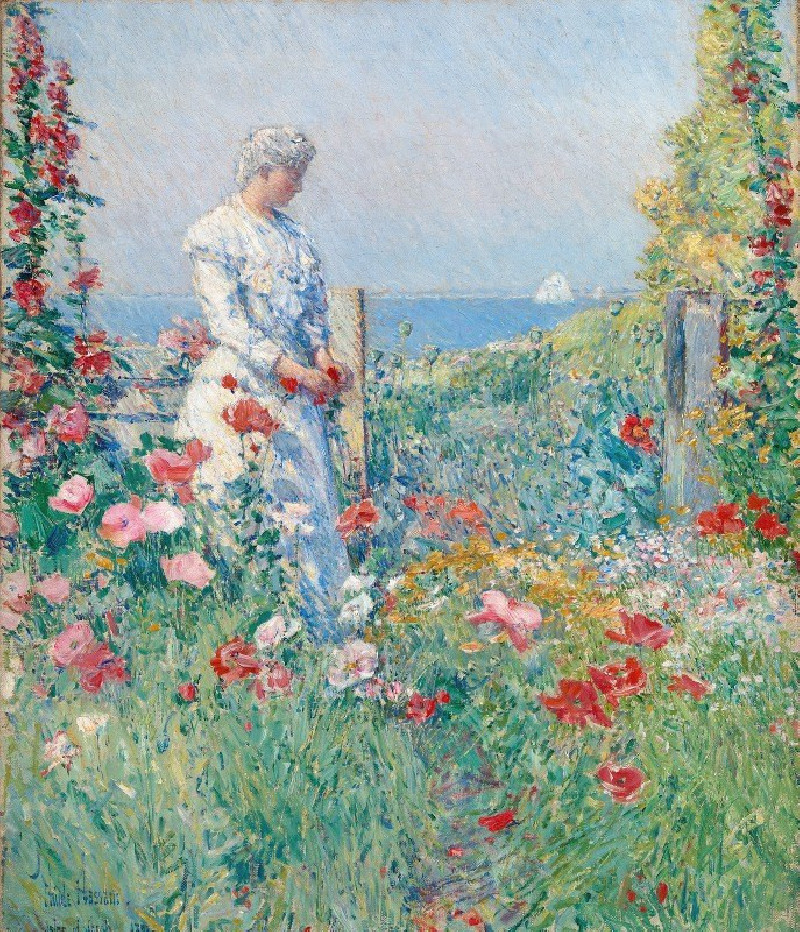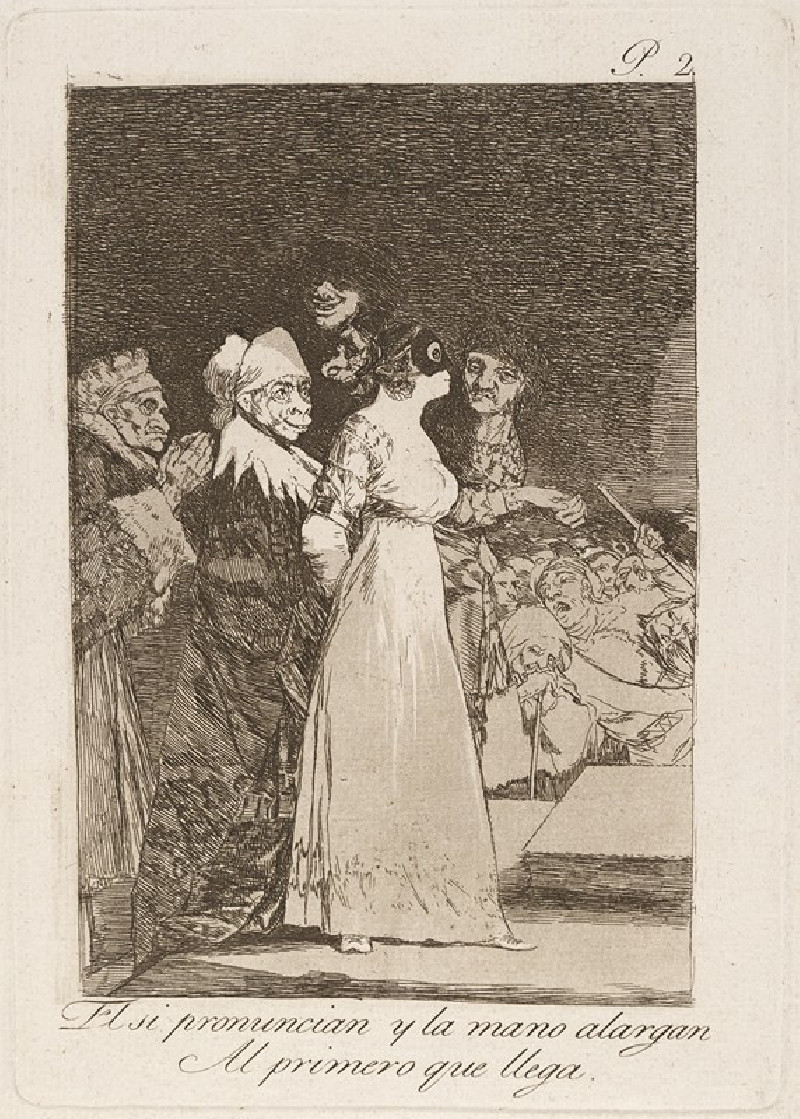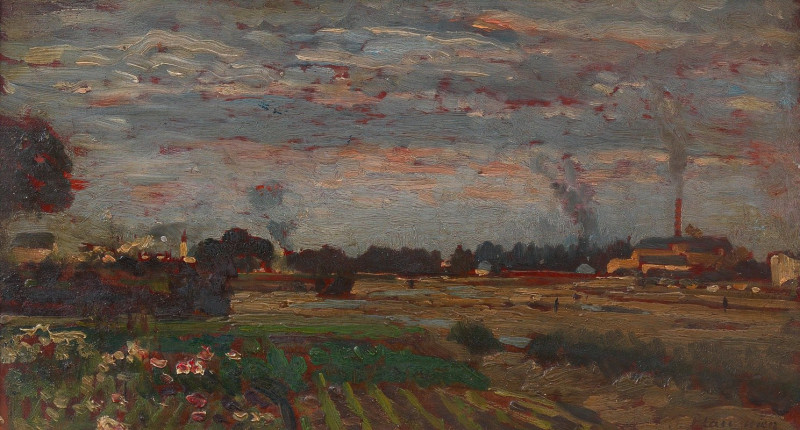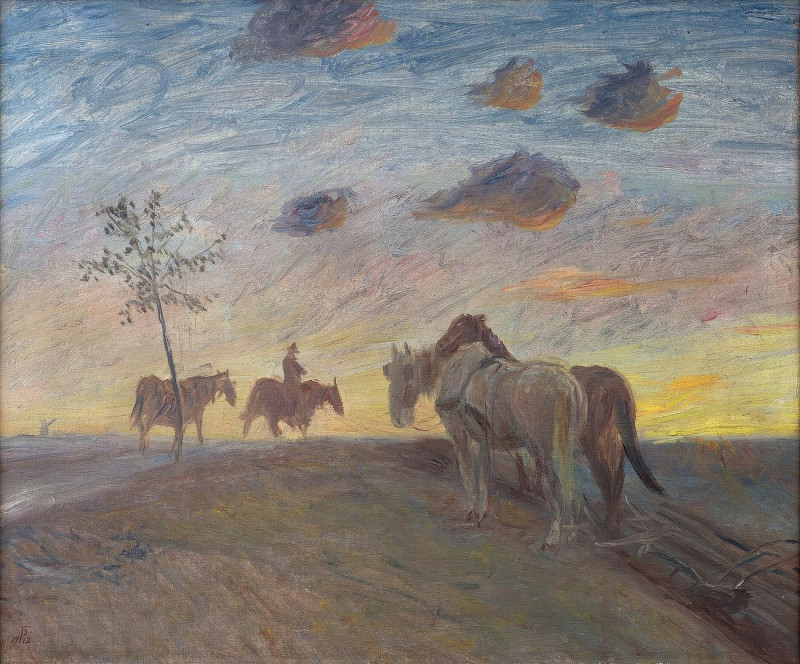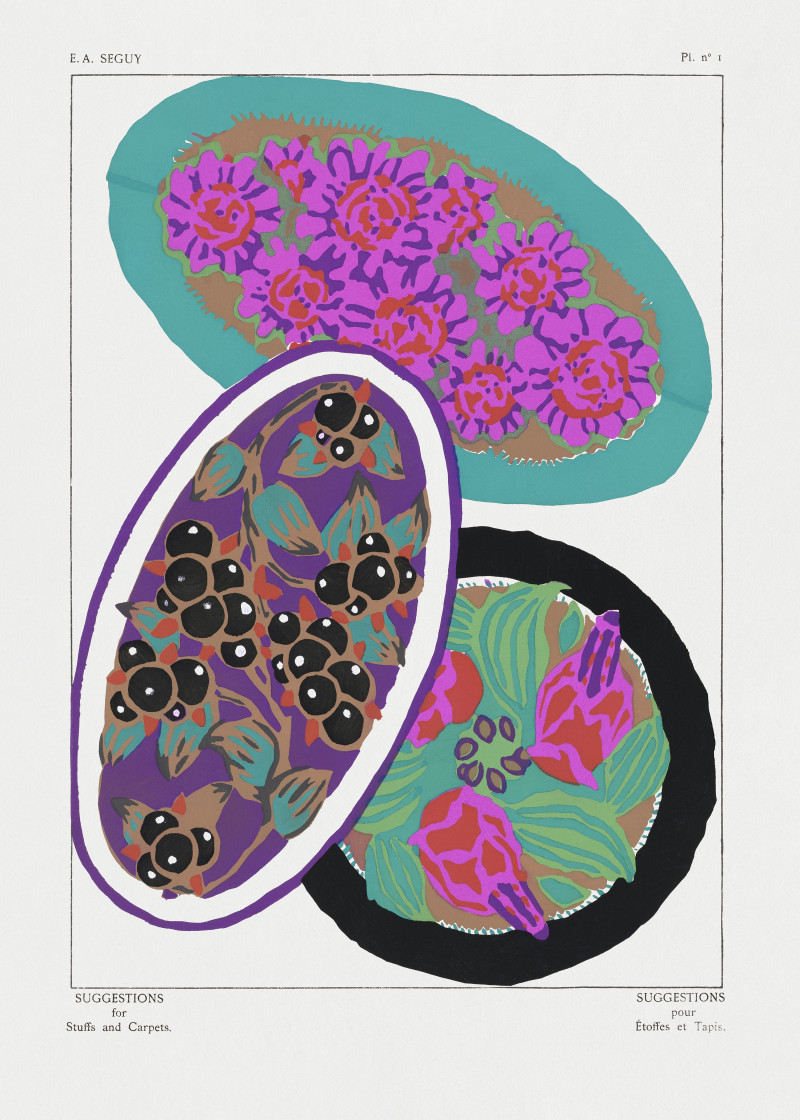La promenade du dimanche (1875)
Technique: Giclée quality print
Recommended by our customers
More about this artwork
Léon François Comerre's "La promenade du dimanche" (1875) captures a charming scene of a mother and her child, gracefully portrayed amid a serene woodland backdrop. The painting reflects an idealized version of a leisurely Sunday stroll, a popular pastime in the 19th century that allowed for a display of refined attire and social status.In the foreground, the figures are depicted with remarkable attention to detail, particularly in their clothing. The mother, adorned in a lavish rose-colored gown with cascading ruffles and floral embellishments, exudes elegance and maternal warmth. Her expression conveys a sense of gentle, watchful care as she holds a parasol, adding both a practical and fashionable element to her ensemble.Beside her stands a young boy, likely her son, dressed in a smart suit that mirrors the sophistication of the time. His outfit, complete with a lace-trimmed collar and a striking blue bow, complements the hues of his mother's attire. His coy expression and slight reluctance in his posture suggest the typical restlessness of youth, captured during a moment meant for quiet promenade.Lush vegetation envelops the duo, with leaves and branches intricately woven into the composition, enhancing the feeling of a secluded retreat into nature. The interplay of light and shadow through the leaves adds a dynamic contrast to the scene, highlighting the intricate details of the figures and their garments."La promenade du dimanche" not only illustrates the familial bonds and social customs of its era but also showcases Comerre's skill in rendering texture and emotion, making it a captivating piece both for its historical context and its aesthetic beauty.
Delivery
Returns
Léon François Comerre was a French academic painter, famous for his portraits of beautiful women and Oriental themes.
Comerre was born in Trélon, in the Département du Nord, the son of a schoolteacher. He moved to Lille with his family in 1853. From an early age he showed an interest in art and became a student of Alphonse Colas at the École des Beaux-Arts in Lille, winning a gold medal in 1867. From 1868 a grant from the Département du Nord allowed him to continue his studies in Paris at the famous École nationale supérieure des Beaux-Arts in the studio of Alexandre Cabanel. There he came under the influence of orientalism.

